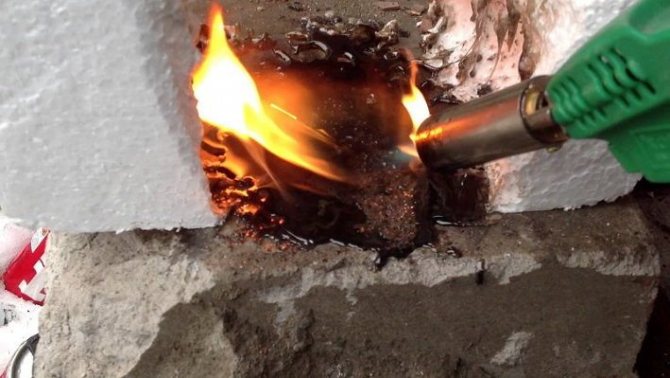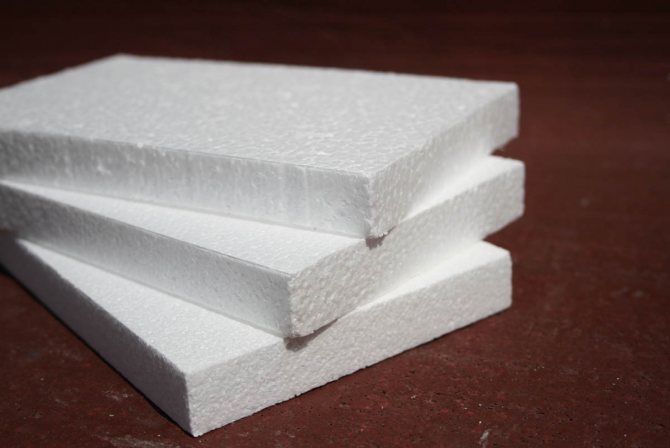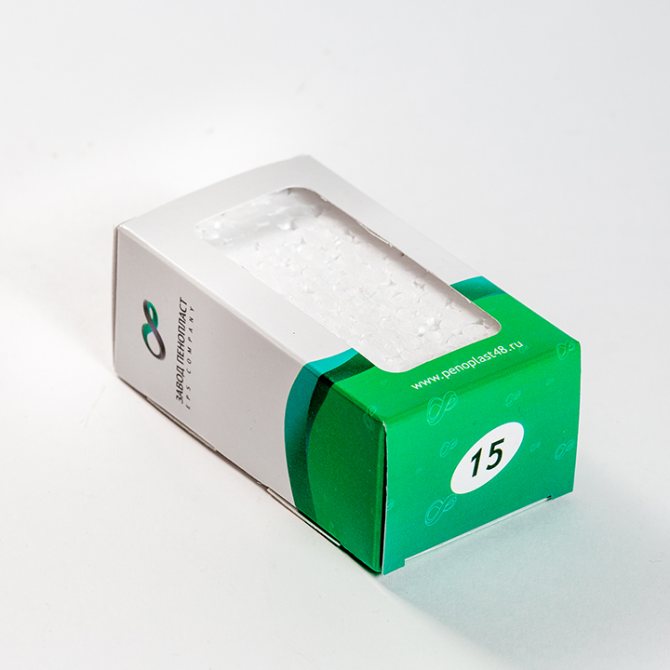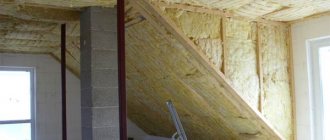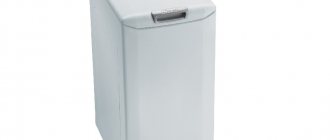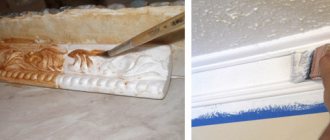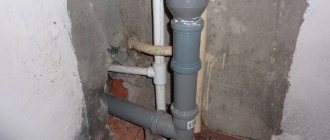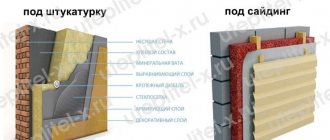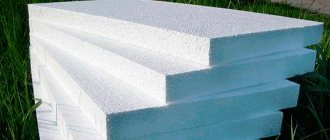Scope of insulation PSB-S-35
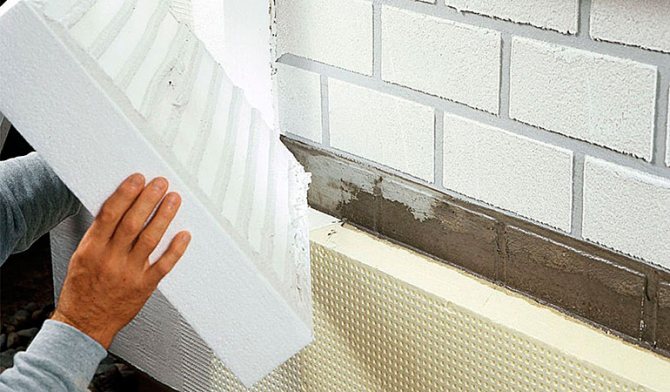
The material has a porous structure, which provides high heat and vapor barrier. Besides, PSB belongs to the category of artificial building materials. It is obtained by foaming plastic, therefore, the insulation is neutral to almost any external environment, it has a long service life
Due to its excellent technical characteristics, PBS S 35 is considered a versatile material with a multifaceted scope. It can be used to perform the following types of work:
- insulation of wall structures, external and internal partitions;
- increasing the sound insulation of premises;
- installation of multilayer thermal insulation panels;
- arrangement of parking lots;
- waterproofing of engineering communications;
- insulation of foundations, fences and loggias;
- thermal insulation of basements and utility rooms;
- arrangement of paths with heating systems.
In principle, expanded polystyrene has practically no restrictions on its use, therefore, it can be equally effectively used in residential and industrial construction.
In addition, the material is easy to process, so it is often used when transporting electronic equipment.
Application of THERMIT XPS 35
Insulation THERMIT is a high-quality insulating material with one of the lowest thermal conductivity coefficients among insulation materials widely used in construction. High strength, rigidity and durability of THERMIT 35 slabs allow them to be used for thermal insulation of underground parts of buildings, floors on the ground, flat roofs, foundations for highways and railway embankments.
THERMIT 35 is the ideal product for applications where operating conditions are extreme - high humidity, high loads, direct contact with the ground.
The material is produced using environmentally friendly foaming technology. Thus, THERMIT and its production technology are safe for humans and the environment.
Insulation material marking
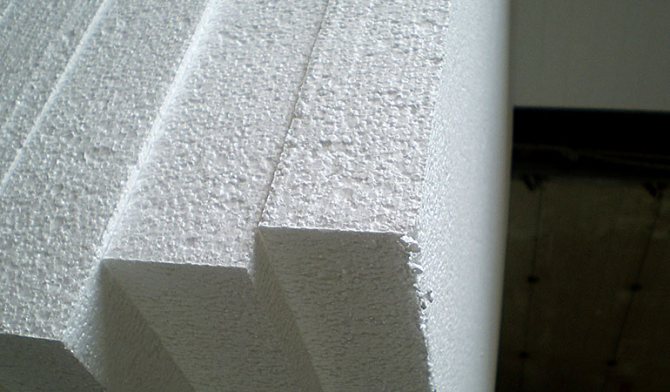

Like any building material, polystyrene foam has markings that indicate the main properties and characteristics. It looks like this.
| Designation | Decoding |
| PS | First letters. Indicates the type of material. In our case, this is expanded polystyrene |
| B | Production technology. Without pressing method. |
| FROM | Fire safety class. Self-extinguishing material |
| The numbers | Density of material |
Considering PSB S 35, the marking informs about the following features: this expanded polystyrene, made without creating high pressure, does not support combustion. The maximum allowable sheet density varies within 35 kg / m3.
Methods for working with foam


Polyfoam is afraid of sunlight, therefore, after installation, it is isolated with a protective layer
When choosing the method and technology of insulation, the requirements of GOST and common sense are taken into account:
- The foam must be protected from ultraviolet radiation - direct sunlight.
- Shock loads on the surface are excluded, it must be protected from physical impact.
- Sheets should not be open in the interior of the premises due to possible damage and styrene vapors.
Foam insulation in private construction is carried out according to the technologies of a ventilated facade, a "wet" facade under plaster, laying between layers of enclosing material.
Plaster finishing procedure


A special foam adhesive is used to insulate the facades.
For work, choose PSB-S-25, or PPS-16F. It is impossible to use foam with a lower density, since it will not withstand the mass of the cement mortar. Buying expanded polystyrene plates with a specific gravity of 35 kg / m3 does not make sense - the material in all respects is not inferior to models 15 and 25, but it costs much more.
Warming algorithm:
- Walls made of bricks or expanded clay concrete (foam concrete) blocks are cleaned of dust and dirt spots.
- The surface is leveled, knocking down the influx of masonry mortar. Plaster if necessary - it is important that there are no drops of more than 1 cm per linear meter of the wall.
- A solution is prepared from a special adhesive for cement-based polystyrene.
- The glue is applied to the slab with a layer of 0.5–1 cm, leveled with a notched trowel.
- PSB is glued to the wall, laying the sheets in a checkerboard pattern. Another option is to use foam mounting glue.
- For reliable fastening, after 3-4 hours, the polystyrene plates are additionally reinforced with dowels with wide caps at the rate of 5 dowels per m2. Seal the joints with polyurethane foam.
- The first layer of plaster is applied, for which the same glue is used that was used in paragraph 4. The plaster mesh is pressed into the layer of plaster, the surface is leveled.
- After drying, carry out the main plaster and putty or use decorative mixtures, for example, bark beetle.
- The surface is painted.
Wet facade technology is rarely used for wooden houses. It is believed that the foam does not allow air to pass through and the house ceases to "breathe", fungus and mold appear on the inner surface of the walls. The issue can be solved by properly organized ventilation of the premises.
Insulation of hollow brick walls
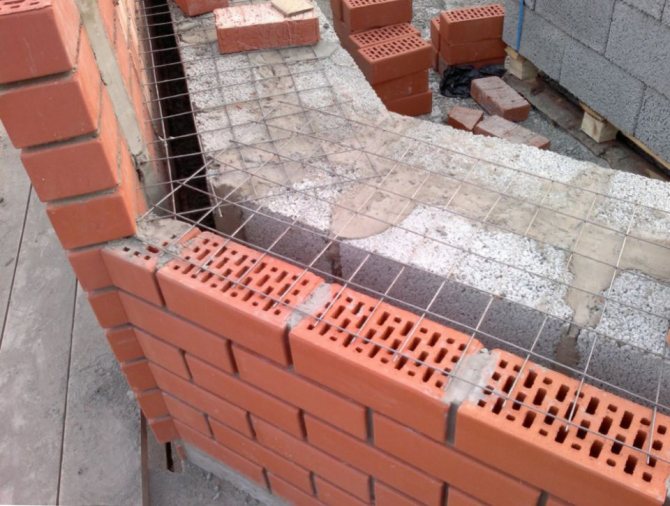

Styrofoam can be laid between two brick walls
The technology is simple. Between the internal load-bearing walls and the external finishing brick, cavities are left, into which, as the masonry is being erected, sheets of polystyrene are laid.
They use the cheapest version of PSB-15 foam. The load in the cavity of the walls is completely absent, and the characteristics of the material are not inferior to foam with a higher density.
When filling hollow walls, it is more profitable to use foam chips - it is cheaper and allows you to completely fill the internal space between the bricks. The material is sold in kraft bags with a volume of 1 m3.
Frame houses and polystyrene
Foamed polystyrene is a popular insulation material for the construction of frame houses.
Foam plastic is mounted between the inner and outer skin. The gaps between the PSB and the beams are sealed with polyurethane foam, this will eliminate "cold bridges" and will not allow the wind to blow through the structure.
It is important to leave ventilation gaps between the foam and the wall cladding so that moisture does not accumulate inside.
Advantages and disadvantages
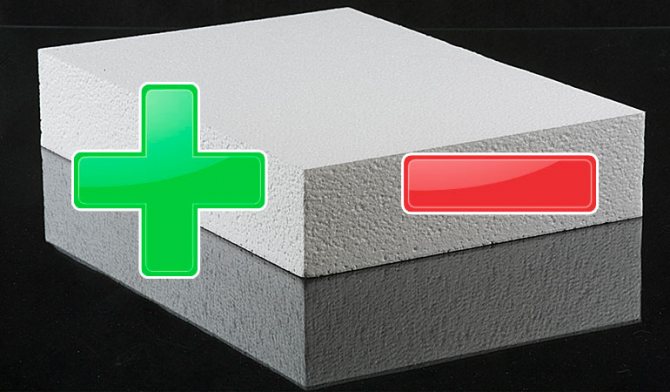

The popularity of expanded polystyrene is explained by its cost and ease of use, but these are far from the only advantages. The main advantages can be expressed as follows:
- No chemically active substances are used in the manufacture, therefore PSB belongs to the category of environmentally friendly products.
- After installation, it increases the vapor permeability, which prevents the development of wall mold and mildew.
- The material is easily processed: the sheet can be cut with an ordinary stationery knife. therefore PSB can be used to insulate buildings with complex geometry.
- The cellular structure helps to reduce the weight of the sheet, so one person can easily cope with the installation.
- It is neutral to any external influences, does not react with other types of building materials.
- After installation, expanded polystyrene does not rot, even with prolonged contact with a humid environment. The sheets do not collapse, which completely eliminates the subsidence of the insulation.
- Long service life: PSB does not lose its original properties within 30 years from the date of manufacture.
- Does not support combustion: the flame does not spread over the sheet, it dies out, melting the edges.
Of course, there were some drawbacks.
By the way, the three detected defects in thermal insulation are unable to cover the main advantages. Significant disadvantages are:
- Loses properties in direct contact with solvents and bitumen.
- Attracts rodents.
- When it melts, harmful substances are released into the atmosphere that pose a threat to human health.
Knowing these nuances, you can better understand the scope of application. PSB and avoid possible misunderstandings.
Despite its excellent resistance to bacteriological effects, expanded polystyrene can become a medium for the development of fungi. This shows up as green or black spots of mildew.
Technical characteristics of polystyrene foam board
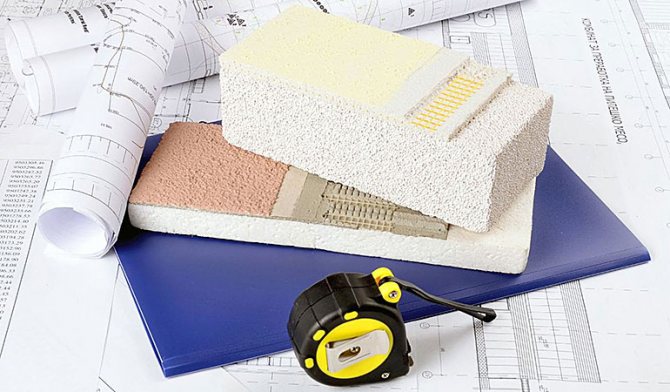

PSB S 35 has the following performance characteristics.
| Indicator | Value |
| Density | 25-35 kg / m3 |
| Linear compression resistance | 0.14 MPa |
| Flexural strength | 0.2 MPa |
| Thermal conductivity | 0.038 W (mK) |
| Water absorption per day | 2 % of the total volume |
| Burning time | no more than 4 s when exposed to open fire |
Interesting technical characteristics include the hypoallergenicity of the material. Thanks to this feature PSB S 35 can be used to insulate children's rooms; during work, there is no need to use personal protective equipment. Against the background of a related penoplex, this is an indisputable plus.
Using
The popular brand of polystyrene is most common in construction work, since it is indispensable for performing thermal insulation of underground utilities, when installing sandwich panels, in multilayer pipeline structures.
PSB-S 35 wide used in roof insulation, floors and walls of buildings, for floor insulation, especially in regions with harsh climatic conditions. It is also used for suspended ceilings, partitioning and shaped cutting. Often, such a brand of insulation is used to protect the soil from freezing and swelling, to break lawns. The only limitation that is taken into account when working with such material is the temperature above + 80 ° C.
Even under humid conditions and low temperatures, the density foam of the given grade is able to maintain all its high qualities as a heat-insulating material.
Insulation of this brand is also suitable for insulating building facades, door and window slopes, for insulating foundations and plinths.
Size range


Expanded polystyrene is produced according to the requirements GOST, therefore, the sheets have standard sizes regardless of the manufacturer. therefore PSB S 35, always present on the market, has the following sheet sizes:
- Length - from 900 to 5000 mm.
- Width - from 500 to 1300 mm.
- Thickness - from 20 to 500 mm.
During production, some deviations from the established norm are allowed. In particular, the linear aspect ratio is 50 mm, thickness: up to 10 mm... Such products are not considered a defect and are allowed to be sold through retail and wholesale trade networks.
Most manufacturers are engaged in the manufacture of products according to individual customer sizes.
TOP-5 trusted manufacturers


When choosing any building material, including insulation, you need to take a responsible approach to the choice of the manufacturer. In this case, you can avoid buying counterfeit products of dubious quality.
If speak about PSB S 35, its main suppliers in Russia are the following enterprises:
- Volgograd-Penoplast... Today, it is one of the leading suppliers of expanded polystyrene in the southern region of the country. The production lines are automatic, they operate on equipment from Germany.
The company is considered young, but dynamically developing, therefore values its reputation, meets clients halfway in resolving any controversial issues. The business card of the enterprise: precise geometry of sheets, the lowest possible cost of production. - "RosPenoplast"... The company is located in the Lyubertsy district of the Moscow region. The manufacturer supplies the market with a wide range of PSB varying degrees of density.
The company takes a responsible approach to the choice of raw materials, which allows maintaining the quality of products at a fairly high level. Production facilities are in line with international class ISO 9001, all products are subject to mandatory certification.
- "StroyPlast"... The production facilities of the enterprise are located in the Krasnoyarsk Territory. The manufacturing process is carried out on the equipment of a German company KURTZ, the line works in automatic mode.
The company is well known in the market over 11 years, carefully monitors all production cycles, always adheres to the price-quality ratio.
- "MosStroy 31"... One of the leading manufacturers in the central region, which owns more than 25% of the expanded polystyrene market. The company uses advanced technologies, the production cycle is carried out on equipment from leading world brands.
The product range includes PSB of varying degrees of density, in demand in all branches of construction.
- LLC "ET-Plast"... Samara enterprise working in this production area since 2002... The technological cycle is carried out on a fully automated line using Italian equipment HIRSCH.
All products are subject to mandatory certification, are resistant to any external influences, and meet environmental safety requirements.
The listed enterprises strictly adhere to the norms GOSTwhich helps to bring high quality products to the market. In addition, manufacturers adhere to a reasonable pricing policy, which attracts the attention of a wide range of buyers.



